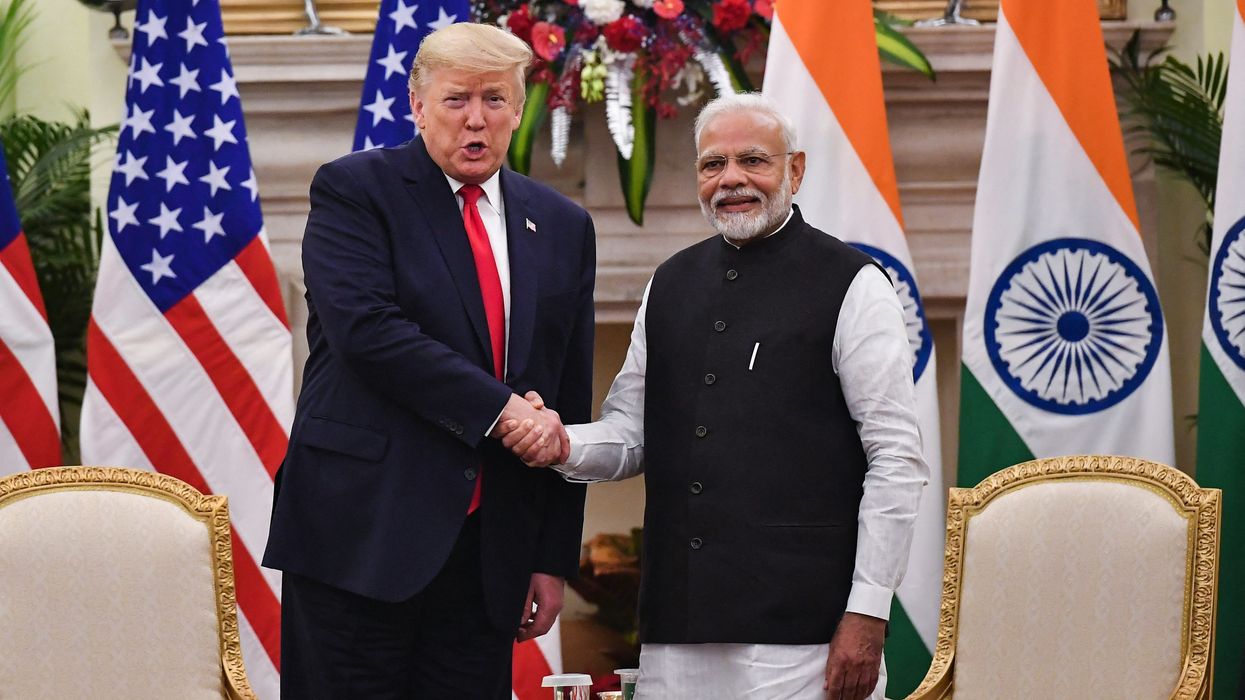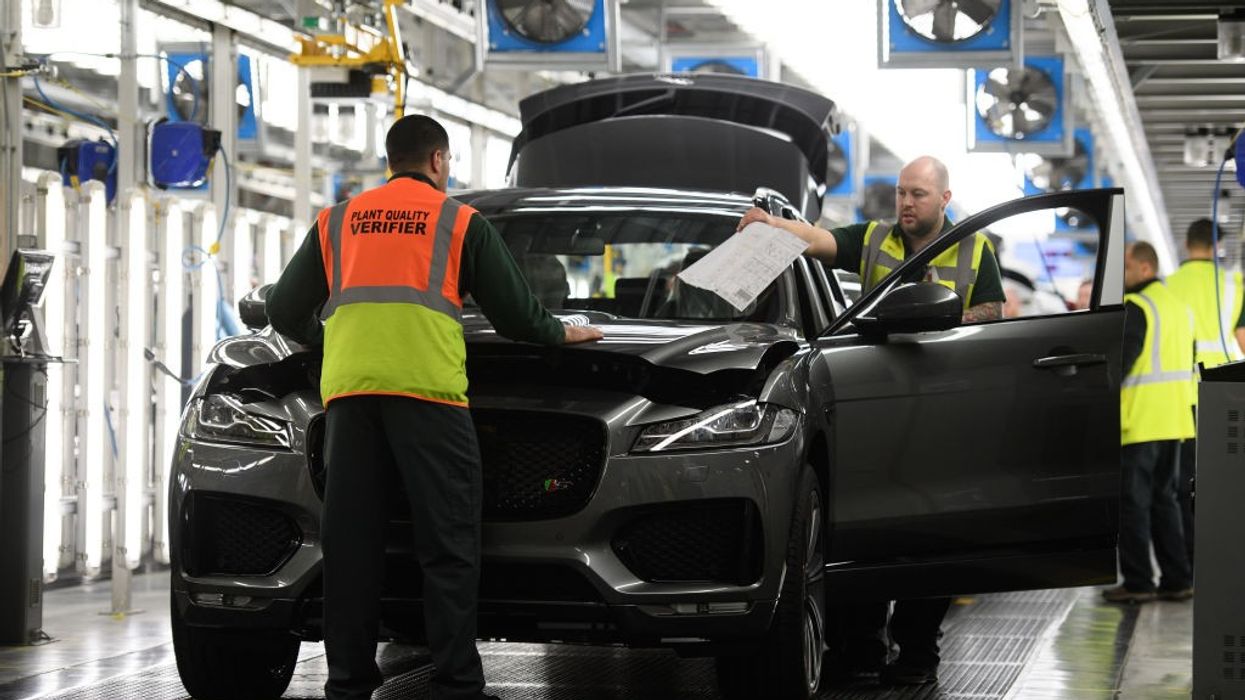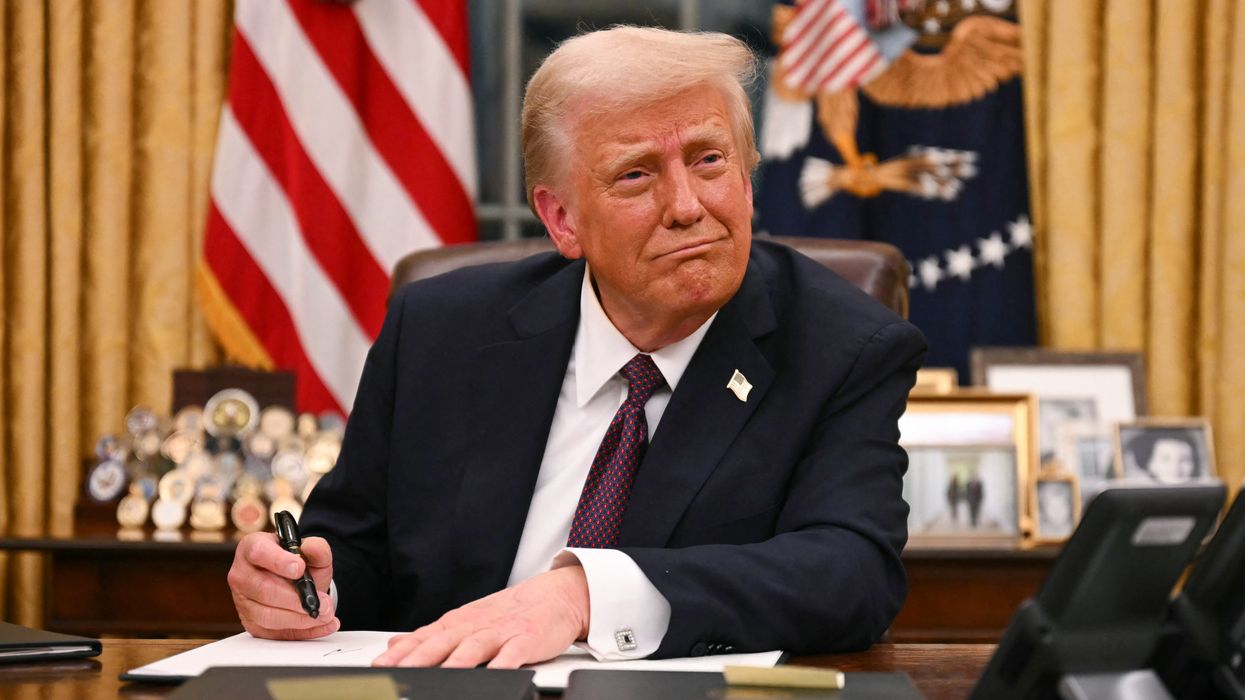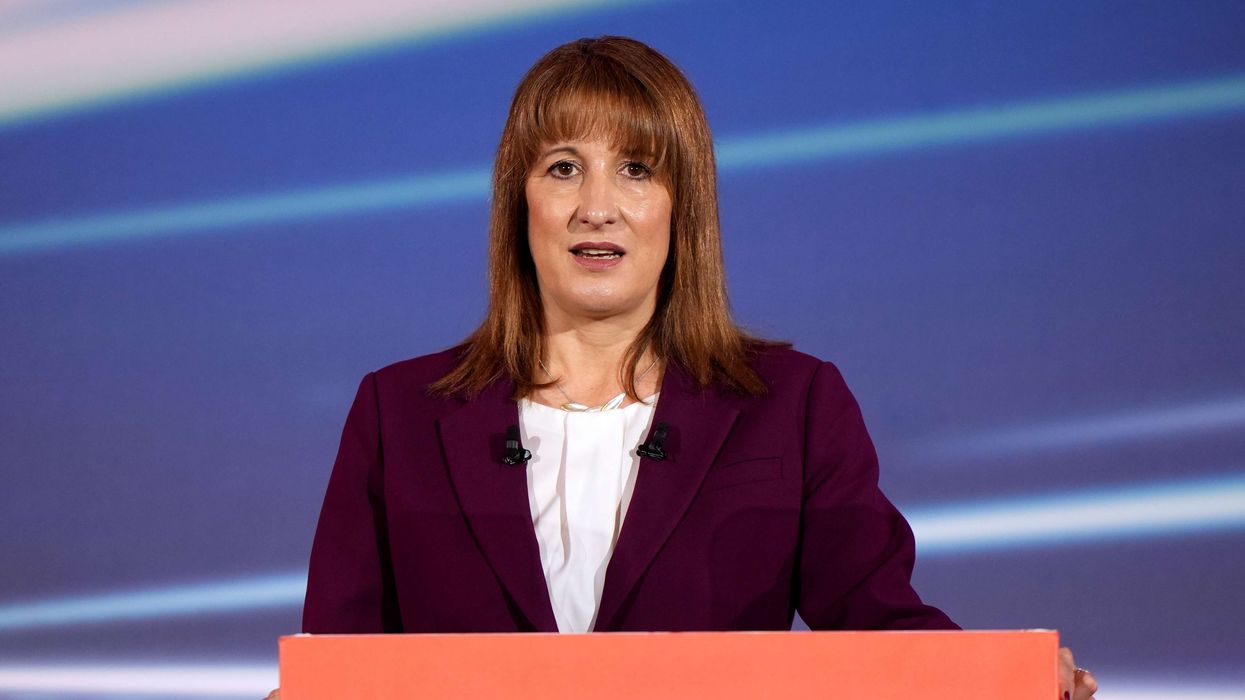THE US could reach a trade deal with India that would help American companies compete more easily in the Indian market and reduce tariff rates, President Donald Trump said on Tuesday. However, he cast doubt on a similar deal with Japan.
Speaking to reporters on Air Force One, Trump said he believed India was ready to lower trade barriers, potentially paving the way for an agreement that would avoid the 26 per cent tariff rate he had announced on April 2 and paused until July 9.
“Right now, India doesn’t accept anybody in. I think India is going to do that, if they do that, we’re going to have a deal for less, much less tariffs,” he said.
Treasury Secretary Scott Bessent also indicated that a deal with India was close. “We are very close with India,” Bessent told Fox News, saying it could help lower tariffs on US imports and prevent a sharp rise in levies.
Indian officials extended their Washington visit through Monday to try to reach an agreement with the Trump administration and resolve remaining concerns, Indian government sources told Reuters.
A White House official familiar with the talks said the Trump administration was prioritising trade negotiations with countries including India over Japan in the lead-up to the July 9 deadline.
Tariff deadline nears
India is among several countries negotiating with the US to avoid a steep tariff increase when the current 90-day pause ends. Without an agreement, India’s reciprocal tariff rate could rise to 27 per cent from the existing 10 per cent.
Talks between the US and India have faced hurdles over differences on import duties for auto components, steel, and agricultural goods.
“We are in the middle — hopefully more than the middle — of a very intricate trade negotiation,” Indian foreign minister Subrahmanyam Jaishankar said at an event in New York on Monday.
“Obviously, my hope would be that we bring it to a successful conclusion. I cannot guarantee it, because there’s another party to that discussion,” Jaishankar said. He added that there “will have to be give and take” and both sides needed to find common ground.
Exporters in India are cautiously hopeful that a deal could be reached before the deadline. Ajay Sahai, Director General of the Federation of Indian Export Organisations, told AFP that exporters were “optimistic” about a possible bilateral agreement. He said it remained “quite a fluid situation” and added, “The feedback which I am getting suggests positive developments either way — and we are hopeful.”
Exporters express concern
Some of India’s major exports such as electronics, gems, jewellery, and shrimp could be impacted by higher tariffs. India recorded a trade surplus of $45.7 billion with the United States last year.
KN Raghavan, Secretary General of the Seafood Exporters Association of India, said the industry was seeing “some amount of anxiety” but also had “more reason for hope.” He said a solution “appears to be in the anvil,” without giving further details.
US Commerce Secretary Howard Lutnick had also said last month that a pact could be expected in the “not too distant future.” Trump echoed that sentiment on Tuesday, calling it “a different kind of a deal.”
“It’s going to be a deal where we’re able to go in and compete,” Trump said. “Right now, India doesn’t accept anybody in. I think India is going to do that, and if they do that, we’re going to have a deal for much less tariffs.”
Key sticking points
An Indian commerce ministry official told AFP that New Delhi was still pushing for relief from separate tariffs on steel and aluminium and greater access for exports such as textiles and footwear.
Disagreements also remain over US efforts to open up India’s agriculture sector. Finance Minister Nirmala Sitharaman told the Financial Express that she was eager for a deal. “I’d love to have an agreement, a big, good, beautiful one; why not?” she said in an interview published Monday.
However, she noted that “agriculture and dairy” were “very big red lines” for India.
Ajay Srivastava of the Global Trade Research Initiative said in a recent note that a smaller agreement was more likely. He suggested India could cut tariffs on certain industrial goods and allow limited access for US agricultural produce in exchange for the US dropping the 26 per cent tariff.
Srivastava also warned that talks “may collapse” if Washington continues pressing India to open its core agriculture sectors or allow genetically modified products.
Raghavan said that if tariffs rise beyond 25 per cent, US buyers may turn to other sources. “Currently, exporters believe they can manage with a 10 per cent tariff, as it can be absorbed. But if it goes back up to 25 per cent to 30 per cent levels, we could see American buyers finding alternative sources,” he said.
Trump casts doubt on Japan deal
While optimism remains on the India front, Trump expressed scepticism about reaching a trade deal with Japan. Bessent told Fox News that different countries had different priorities in the talks.
Trump said he was unlikely to extend the July 9 deadline and would proceed by sending letters notifying countries of the tariff rates they would face.
“We’ve dealt with Japan. I’m not sure we’re going to make a deal. I doubt it,” Trump said aboard Air Force One.
He suggested Japan could face tariffs of 30 per cent or 35 per cent on imports — well above the 24 per cent rate announced on April 2, which was paused until July 9.
Trump criticised Japan for refusing to accept US-grown rice while exporting millions of cars to the US. “So what I’m going to do, is I’ll write them a letter saying we thank you very much, and we know you can’t do the kind of things that we need, and therefore you pay a 30 per cent, 35 per cent or whatever the numbers that we determine,” he said.
So far, only the UK has reached a limited trade deal with the Trump administration, agreeing to a 10 per cent tariff on many goods, including autos, in exchange for special access for aircraft engines and British beef.
(With inputs from agencies)














